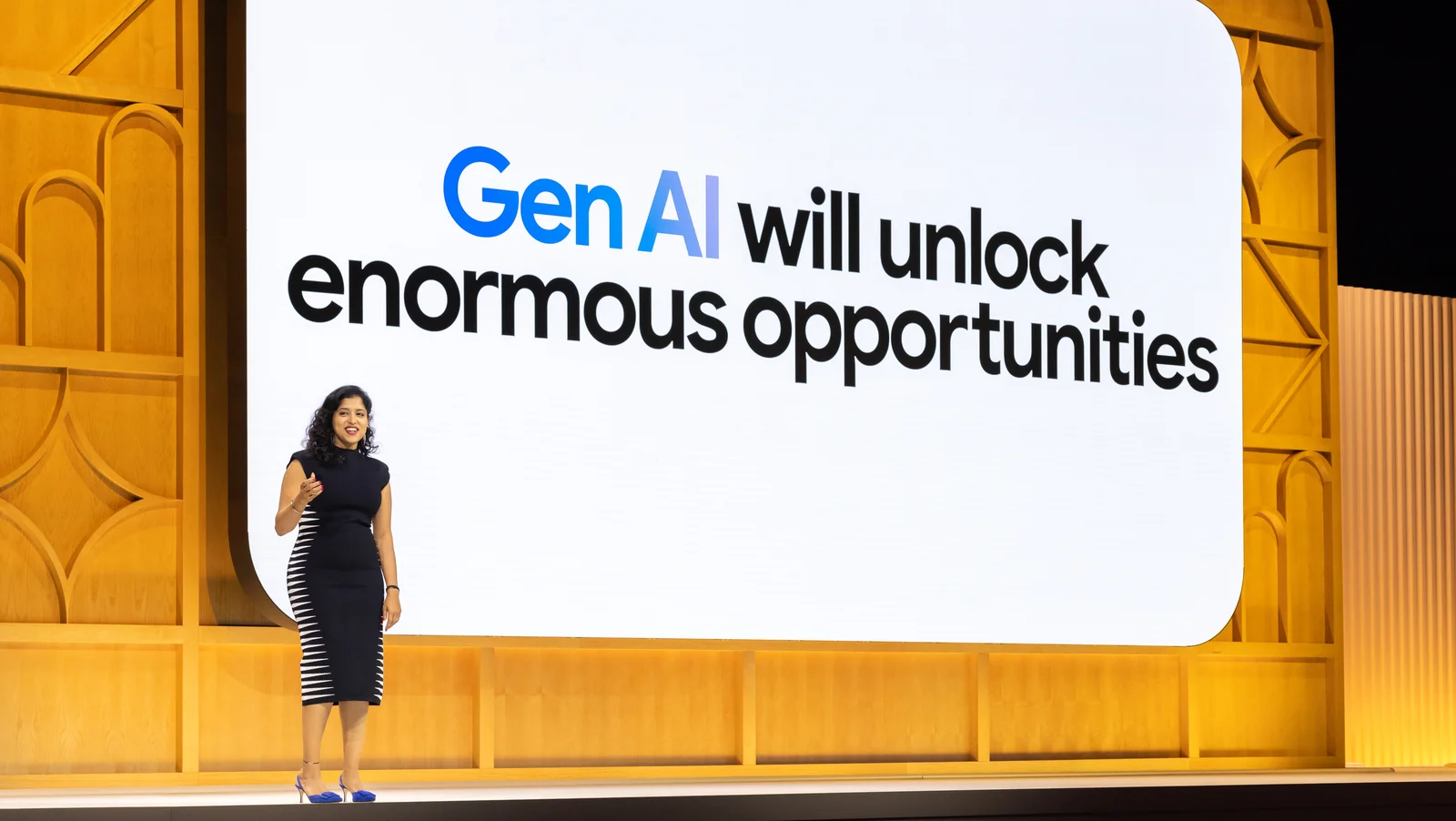For over two decades, Google has harnessed algorithms, a form of AI, to enhance its services. As adoption of AI has grown and its capabilities expanded, Google has accelerated the integration of AI in its ad products to increase relevance for its users and effectiveness for advertisers. This was the core focus of the 2024 Google Marketing Live (GML) event held in May.
At GML, Google highlighted the growing role AI is playing in its ad products. However, speakers also emphasized the important role that marketers and their agency partners continue to play. While AI can provide strategic insights, it cannot replicate the ingenuity and creativity that human marketers bring to the table.
Below, we review the key product announcements that took place at GML.
Key Product Announcements
While Google made 36 announcements at GML, we have focused on those we believe will have the most significant near-term impact for most advertisers.
Search
- AI Overviews: As Google continues to rollout AI Overviews in Search, search and shopping ads will start to be tested in the overviews and labeled as “sponsored.” Ads will be matched to the query but also the AI overview with the goal of making it easier and faster for users to act right away.
- Implication – SEM and SEO strategies will need to be designed and optimized inclusive of search listings and AI overviews to maximize impact.
- Brand Profiles: Visual brand profiles displayed on search to provide images, videos and promotions for a brand in relevant shopping queries and inspired by Business Profiles offered to local businesses on search. The profile will be powered by information from an advertiser’s Google Merchant Center (GMC), website, third party license data and other public sources. This is an organic search placement.
- Implication – Ensure information is robust and up-to-date in GMC.
- Implication – Ensure information is robust and up-to-date in GMC.
- Visual Search: Google has determined that a high volume of visual searches have commercial intent and are using organic features and ads to make it easier for users to purchase or act. Google will extend Shopping ads into visual search results when consumers use Google Lens or Circle to Search. Ads will showcase products relevant to the photos and screenshots that people search with.
- Implication – Incorporate image search optimization into SEO strategies and understand impact on Shopping campaign performance as ads are extended into visual search results.
YouTube
- Enhanced YouTube Shorts ads: In addition to new lineups for Shorts, Google is also enhancing ads to get closer to the organic user experience by adding stickers, interactive gestures and the ability to drive to long-form videos or playlists while staying in the YouTube app.
- Implications – With a large user base and high growth, YouTube Shorts ads should be considered in plans alongside TikTok and Instagram. Vertical creative formats will be required for optimal performance.
- YouTube Shopping Affiliate Program: Similar to Meta and TikTok, Google is allowing creators to easily tag products in their videos, shorts and livestreams to make it possible for viewers to shop while they watch. Shopify Plus and Advanced merchants in the US will be able to join the program to easily sync their products to YouTube. BrandConnect will make it easy for brands to find creators already highlighting their products who can be considered for potential partnerships.
- Implications – Paid Social, Influencer and Affiliate must work closer together to drive success in this new era of shopping behaviors and commerce. YouTube strategies must now be inclusive of YouTube Shorts.
Performance Max (PMax)
- AI-Powered Creative: Google is continuing to rollout features to make it easier for advertisers to leverage AI to more efficiently develop creative assets at scale, while in line with brand guidelines and overall creative strategy. This includes allowing advertisers to keep what they make in the platform.
- Implications – Test new features as available, particularly for budget constrained advertisers, to ensure enough assets that are purpose-built for advertising and allow for enough variations to power optimization. Clear understanding of brand guidelines, creative strategy and top-performing assets will be critical to generate valuable new assets.

- New Reporting, Optimization & Controls: Long-awaited by industry insiders, Google will now provide more robust reporting and controls for PMax including improvements to placement and asset-level reporting. New bidding options are launching like the ability to optimize for profit. Experimentation tools around impact of additional image, video and text assets beyond product feeds and conversion lift studies to help understand incrementality are also coming soon.
- Implications – Better insights and optimization opportunities for advertisers using PMax will help improve performance and better ensure brand safety.
- Loyalty Promotions: Ability to highlight member only promotions or other benefits by tapping into an advertiser’s first-party data in a privacy-safe way.
- Implications – Highly relevant feature for advertisers with repeat purchase opportunities to test and further resonate with loyal customers.
Data & Measurement
- Google Ads Data Manager: Now available to everyone, Google Ads Data Manager will make it easier for advertisers to tap into their first-party data and make it simpler for multiple teams to unify processes and workflows.
- Implications – As first-party data continues to play a growing role in Advertiser’s campaigns, Google is making it easier to activate and manipulate this data in a privacy-safe environment.

- Meridian: Meridian is Google’s open source MMM that will be rolling out. Google sees this as important tool to help modernize processes for today’s media ecosystem.
- Implications – Tool to explore and pilot for advertiser’s where MMM is cost-prohibitive today and/or much of their ad spend is within Google’s ecosystem.
Summary
While some of Google’s announcements were very specific to the retail space, particularly apparel and beauty, many will provide benefits and testing opportunities across verticals in the months to come. The new features are ripe for testing, and we are encouraged by Google’s efforts to provide more transparency and the insights advertisers desire, especially as AI has driven increased automation within campaign activation.
In general, Google’s POV on the future mirrors much of Edelman DXI’s key principles in the modern media landscape of breaking down silos between channels in favor of agility and performance, bringing creative and media closer together in dynamic ways to enhance effectiveness, and innovation in measurement to increase speed to insight and in turn action.
We recommend every advertiser evaluate each of the new features in depth for relevancy to their business and campaigns and prioritize learning opportunities based on expected impact to their results. For our clients, we will be proactively doing this on your behalf and setting up dedicated time to review our recommendations.
About the Author
Erica Barth leads Edelman DXI’s performance intelligence team in the U.S., where she creates innovative performance marketing and analytics strategies to drive business outcomes.

